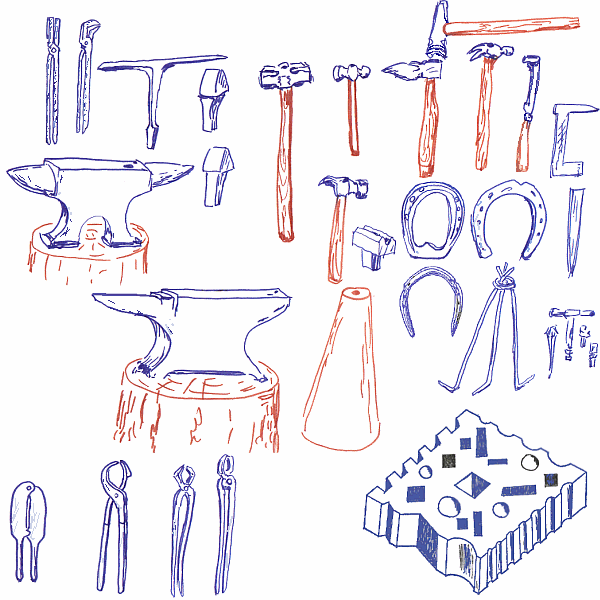

| The blacksmith was always a central worker of the village; so many other craft workers had to depend on him. The farmer needed him, but so did the wheelwright, for example, and many craftworkers for their own tools (or at least to finish them with the strength of metal). |
| The blacksmith worked in a forge and in it a bricks contained hearth for the fire, and nearby the anvils, for heavy and finer work. The swage block of cast iron provided shapes into which hot metal was hammered. Around these all other tools were used. The blacksmith could make his own tools, and nails. |
| Smedley, N. (1977), East Anglian Crafts, London: B. T. Batsford, images drawn from originals at 35 and 37, text at 34-44. |